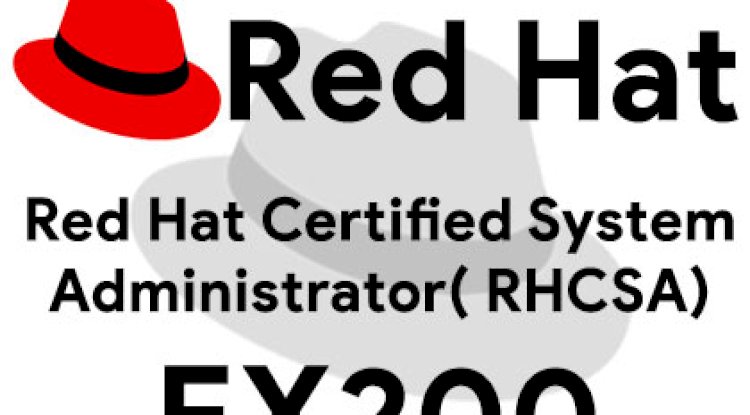Most Commonly Used TCP and UDP Ports List with Services for Ethical Hacking, Networking, and Cybersecurity (Updated 2025 Guide)
Understanding the list of common TCP and UDP ports and the services they correspond to is essential for ethical hackers, penetration testers, network administrators, and cybersecurity professionals. These ports, such as FTP (21), SSH (22), HTTP (80), and HTTPS (443), enable communication between devices and software across a network. Unsecured or open ports can often be exploited by attackers, which is why knowing their purpose, usage, and associated protocols is critical for maintaining secure network architecture and for conducting reconnaissance during vulnerability assessments. This blog covers a detailed port-to-service mapping, real-world hacking scenarios, and FAQs to help you master port-based network communication and security fundamentals.

Table of Contents
- Introduction
- What Are Ports in Networking?
- Why Are Common Ports Important in Ethical Hacking and Cybersecurity?
- List of Most Common TCP and UDP Ports and Their Services
- Real-World Use Cases of Common Ports in Ethical Hacking
- How to Secure Common Ports
- Conclusion
- Frequently Asked Questions (FAQs)
Introduction
Understanding common ports and services is fundamental for anyone working in networking, cybersecurity, or ethical hacking. Ports are virtual endpoints that facilitate communication between different applications and devices over a network. Each port is associated with a specific service or protocol such as HTTP, FTP, SSH, and DNS. Knowing which ports are commonly used can help system administrators secure their infrastructure and help penetration testers discover vulnerabilities during a scan.
This blog provides a detailed list of commonly used TCP and UDP ports, the services they run, their functions, and their significance in real-world networking and hacking scenarios.
What Are Ports in Networking?
Ports in networking are logical access channels that allow communication between different systems over the internet or local networks. Each port is associated with a port number, ranging from 0 to 65535, and is categorized as:
-
Well-known ports (0–1023)
-
Registered ports (1024–49151)
-
Dynamic/private ports (49152–65535)
These ports use TCP (Transmission Control Protocol) or UDP (User Datagram Protocol) to establish and manage data connections.
Why Are Common Ports Important in Ethical Hacking and Cybersecurity?
-
Reconnaissance & Enumeration: Port scanning is often the first step in identifying vulnerabilities during ethical hacking.
-
Firewall Configuration: Knowing common ports helps in configuring firewall rules to allow or block traffic.
-
Intrusion Detection: Suspicious activity on non-standard ports may signal malware or hacking attempts.
-
Security Audits: Port usage is critical in vulnerability assessments and risk evaluations.
List of Most Common TCP and UDP Ports and Their Services
| Port Number | Protocol | Service | Description |
|---|---|---|---|
| 20, 21 | TCP | FTP | File Transfer Protocol - used for transferring files. |
| 22 | TCP | SSH | Secure Shell - remote login and command execution. |
| 23 | TCP | Telnet | Unsecured text-based remote login (deprecated due to insecurity). |
| 25 | TCP | SMTP | Simple Mail Transfer Protocol - for sending emails. |
| 53 | TCP/UDP | DNS | Domain Name System - resolves domain names to IP addresses. |
| 67, 68 | UDP | DHCP | Dynamic Host Configuration Protocol - assigns IP addresses automatically. |
| 69 | UDP | TFTP | Trivial File Transfer Protocol - simple file transfer without authentication. |
| 80 | TCP | HTTP | HyperText Transfer Protocol - used for web browsing. |
| 110 | TCP | POP3 | Post Office Protocol v3 - retrieves emails. |
| 123 | UDP | NTP | Network Time Protocol - synchronizes system clocks. |
| 135 | TCP/UDP | RPC | Remote Procedure Call - used by Windows services. |
| 137-139 | TCP/UDP | NetBIOS | Used for file and printer sharing on Windows networks. |
| 143 | TCP | IMAP | Internet Message Access Protocol - fetches emails. |
| 161-162 | UDP | SNMP | Simple Network Management Protocol - monitors network devices. |
| 389 | TCP/UDP | LDAP | Lightweight Directory Access Protocol - used for accessing directory services. |
| 443 | TCP | HTTPS | Secure HTTP - encrypts web traffic using SSL/TLS. |
| 445 | TCP | SMB | Server Message Block - file sharing and communication in Windows. |
| 514 | UDP | Syslog | Sends system logs to remote servers. |
| 993 | TCP | IMAPS | Secure IMAP over SSL/TLS. |
| 995 | TCP | POP3S | Secure POP3 over SSL/TLS. |
| 1433 | TCP | MS SQL Server | Used for Microsoft SQL Server database communication. |
| 1521 | TCP | Oracle DB | Oracle database default port. |
| 3306 | TCP | MySQL | Used by MySQL database systems. |
| 3389 | TCP | RDP | Remote Desktop Protocol - remote graphical access to Windows. |
| 5432 | TCP | PostgreSQL | PostgreSQL database communication. |
| 5900 | TCP | VNC | Virtual Network Computing - remote desktop sharing. |
| 8080 | TCP | HTTP-Alt/Proxy | Alternate HTTP port or used by proxy servers. |
Real-World Use Cases of Common Ports in Ethical Hacking
1. Port Scanning
A hacker or ethical hacker uses tools like Nmap to scan ports:
nmap -sS -p- 192.168.1.10
This command performs a SYN scan on all 65535 ports of the target IP.
2. Service Detection
Identify what service is running on a port:
nmap -sV -p 22 192.168.1.10
It may show:
22/tcp open ssh OpenSSH 7.4 (protocol 2.0)
3. Vulnerability Exploitation
If port 445 (SMB) is open and unpatched:
-
You can test for EternalBlue using Metasploit:
use exploit/windows/smb/ms17_010_eternalblue
4. Brute Force Attack
Port 21 (FTP) is open; try login brute force using Hydra:
hydra -l admin -P /usr/share/wordlists/rockyou.txt ftp://192.168.1.10
How to Secure Common Ports
-
Close unused ports via firewall or router.
-
Use firewalls like UFW or iptables to restrict access.
-
Install intrusion detection systems like Snort.
-
Encrypt services using SSL/TLS (e.g., HTTPS instead of HTTP).
-
Keep services updated to patch known vulnerabilities.
-
Use strong authentication and rate limiting to prevent brute-force attacks.
Conclusion
Understanding and managing common ports and services is critical in networking, cybersecurity, and ethical hacking. Whether you're scanning a target network or defending your infrastructure, this knowledge is foundational. Make sure to monitor open ports, close unnecessary ones, and secure the necessary ones with strong configurations and encryption. For ethical hackers, this is often the first door into a vulnerable system—and for defenders, the first wall of protection.
FAQs
What is a network port in simple terms?
A port is a virtual communication endpoint that helps devices and services communicate over a network.
What is the range of TCP and UDP ports?
Port numbers range from 0 to 65535. Well-known ports are from 0 to 1023, registered ports from 1024 to 49151, and dynamic/private ports from 49152 to 65535.
Why are ports important in cybersecurity?
Ports help identify services running on a system. Unsecured ports can be exploited by attackers for unauthorized access or data theft.
What is the difference between TCP and UDP ports?
TCP is connection-oriented and reliable, while UDP is faster but connectionless and doesn’t guarantee delivery.
Which tool is commonly used to scan open ports?
Nmap is the most widely used tool for port scanning.
What is the function of port 21?
Port 21 is used for FTP (File Transfer Protocol) to transfer files between systems.
Why is port 22 considered secure?
Port 22 is used by SSH (Secure Shell), which encrypts data and is used for secure remote login.
Can I close unused ports?
Yes, and you should. Closing unused ports reduces the attack surface of your system.
What happens if port 80 is open?
Port 80 allows unencrypted web traffic via HTTP. It’s safe if your web server is properly configured.
How do hackers use port scanning?
They scan ports to find open ones, identify services, and exploit vulnerabilities in those services.
What is port 443 used for?
Port 443 is used for HTTPS, which encrypts web traffic using SSL/TLS.
What is a firewall's role in port security?
Firewalls monitor and control incoming/outgoing traffic based on port rules, blocking unauthorized access.
Is Telnet still used on port 23?
Rarely. It’s insecure and has been replaced by SSH for secure communications.
What is the risk of leaving port 445 open?
Port 445 can be used in SMB attacks like EternalBlue, leading to full system compromise.
What are ephemeral ports?
Ephemeral ports (49152–65535) are temporary ports used by the client for short-lived connections.
Can a service run on a non-standard port?
Yes, but this is known as port obfuscation, often used to reduce automated attacks.
What port does DNS use?
DNS primarily uses port 53, both TCP and UDP.
How do attackers exploit open database ports like 3306 or 1433?
By exploiting default credentials, weak authentication, or misconfigured access control.
How does an administrator detect open ports?
By using tools like Nmap, Netstat, or advanced network scanners.
What is the use of port 3389?
3389 is used for Remote Desktop Protocol (RDP) for accessing Windows systems remotely.
Is port scanning legal?
It depends on intent and jurisdiction. It’s legal in ethical hacking with authorized consent.
What is port 25 used for?
Port 25 is for SMTP used to send emails. It’s often restricted to prevent spam.
What port does MySQL use by default?
Port 3306 is the default for MySQL database connections.
What’s the role of port 161?
Used by SNMP (Simple Network Management Protocol) to manage network devices.
What does port 8080 usually serve?
Port 8080 is an alternative HTTP port or used by proxy services.
Why should port 69 (TFTP) be secured or disabled?
TFTP has no authentication and can be abused for file transfers or malware drop.
Can port scanning be detected?
Yes, with intrusion detection systems (IDS) like Snort or Suricata.
What is the default port for LDAP?
LDAP uses port 389 for directory access.
Are all ports used by malware?
Malware can use both standard and uncommon ports to communicate or spread.
How to monitor port activity on a system?
Use tools like netstat, lsof, Wireshark, or dedicated monitoring software.












![Top 10 Ethical Hackers in the World [2025]](https://www.webasha.com/blog/uploads/images/202408/image_100x75_66c2f983c207b.webp)

![[2025] Top 100+ VAPT Interview Questions and Answers](https://www.webasha.com/blog/uploads/images/image_100x75_6512b1e4b64f7.jpg)









